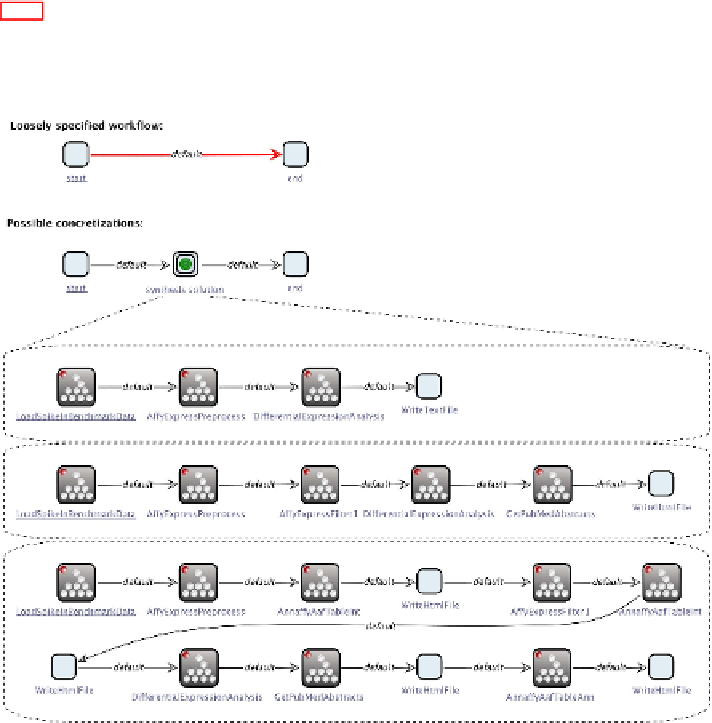Information Technology Reference
In-Depth Information
whole analysis workflows automatically. Accordingly, the exemplary work-
flow composition problem for this scenario is not, in contrast to the previous
examples, embedded in some more or less complex workflow skeleton, but
conceived for the start-to-end synthesis of the analysis pipeline. As Figure
6.10 (top) shows, such a minimal loosely specified model for synthesis with
PROPHETS consists of two (Noop) SIBs (here simply labeled
start
and
end
) that are connected by a loose branch.
Fig. 6.10
Loose programming of microarray data analysis workflows
The bottom of the figure shows three of the numerous possible concretiza-
tions of the loose branch. The first example synthesis solution is one of the
shortest possible solutions, consisting merely of a
BenchmarkDataLoading
,
a
Preprocessing
,a
StatisticalAnalysis
and a
WriteFile
step. As it is recom-
mended to filter the preprocessed data prior to applying statistical analyses,
an additional constraint that enforces the use of a
Filtering
services may
be added at workflow design time. Together with a constraint that enforces
the use of an (also recommended)
Annotation
step, the synthesis solutions
will comprise at least two additional steps, as shown in the second example:

Search WWH ::

Custom Search